Comprehensive Review of iPhone SE Camera Features
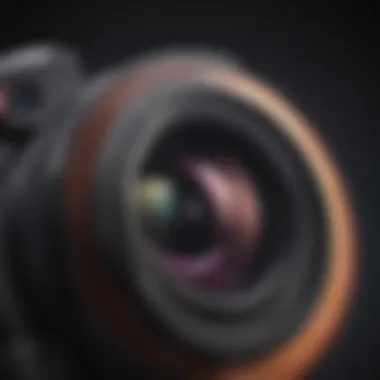
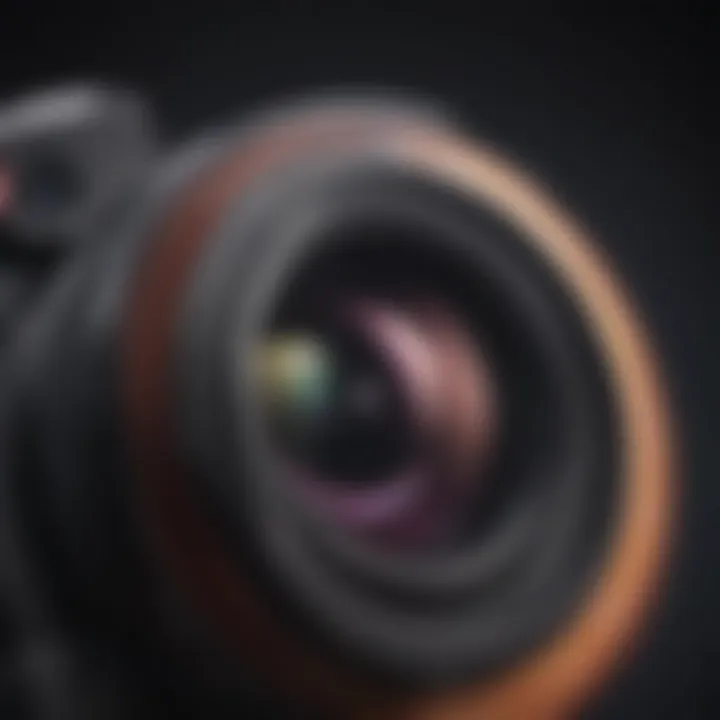
Intro
The landscape of smartphone photography continues to evolve, and the iPhone SE presents an enticing entry point into this domain. Apple has taken strides to fit impressive camera specifications into this compact device, making it a favorite for both seasoned photographers and casual users. In this analysis, we'll unpack the camera specifications of the iPhone SE, exploring what sets it apart, how it melds hardware and software, and how well it performs in real-world settings. Whether you are capturing moments as they unfold or diving deep into manipulations, the iPhone SE aims to please.
Product Overview
Overview of the Apple product being discussed
The iPhone SE, often dubbed as the pocket powerhouse, aims to deliver flagship-level performance without the staggering price tag. Launched in 2020, it packs a considerable punch in a design reminiscent of its predecessors, while giving users access to Apple's most potent features.
Key features and specifications
At the heart of the iPhone SE's photography capabilities lies its single-lens rear camera system, which includes a 12 MP wide lens featuring an f/1.8 aperture. Here's what it brings to the table:
- Smart HDR 3: Enhances photo details and generates balanced exposure across highlights and shadows.
- Portrait Mode: Available for a bokeh effect, bringing the subject into sharp focus against an aesthetically blurred background.
- 4K Video Recording: Capable of up to 60 fps, enabling you to capture cinematic-like video footage with great detail.
Comparison with previous models (if applicable)
Comparing the iPhone SE's specs with an older model like the iPhone 7 reveals notable enhancements. The SE's computational photography features and image processing capabilities have surged forward, benefiting from the A13 Bionic chip, a technology that was absent in the previous editions. The SE provides a similar dual-camera experience found in the iPhone 11 series while keeping a modest form factor.
Performance and User Experience
Performance analysis (speed, multitasking, battery life, etc.)
The iPhone SE's performance, chiefly driven by the A13 Bionic chip, deserves special mention. This chip provides the muscle required for not just photography but also effective multitasking and smooth navigation between applications. Users can seamlessly switch tasks without a hitch, and the camera opens in a flash, ready to catch that fleeting moment. Battery life holds up well, allowing extended use, especially during long photo sessions.
User interface and ease of use
Navigating the camera interface is intuitive and well-designed. With an easy-to-access control bar, toggling between modes becomes second nature. Focus and exposure can be adjusted with a simple tap and swipe - a user-friendly design that appeals to both beginners and seasoned lensmen.
User experience feedback and opinions
Feedback from users has largely been positive, particularly regarding the camera's ability to adapt to varying lighting conditions. Many appreciate how it captures sharp images in low light—a feature that has improved considerably over previous models. Users on platforms like Reddit often discuss how the camera performance holds its position against higher-end models, making it great value for the price.
Design and Build Quality
Design elements and aesthetics of the product
With an aesthetic that remains true to Apple's design language, the iPhone SE combines elegance with functionality. Its compact size makes it exceptionally portable, fitting snugly in hand - designed for both usability and style.
Materials used in construction
The iPhone SE is constructed from durable glass and aerospace-grade aluminum. It not only ensures a premium feel but also adds to the device's sturdiness against daily wear and tear. Users have noted how it withstands typical usage, maintaining a clean look even after consistent use.
Durability and build quality assessments
In terms of durability, the iPhone SE is rated with an IP67 classification, which means it can handle splashes and brief immersion in water. This feature adds peace of mind for users who want to document their adventures without the anxiety of damaging their devices.
Software and Updates
Operating system features and updates
Running on iOS, the iPhone SE benefits from regular updates and features synonymous with the latest Apple devices. Features like Night Mode and QuickTake video enhance photographic flexibility, providing a sophisticated touch to user experience.
App compatibility and availability
The camera app is compatible with numerous photography and editing apps available on the App Store. Whether you seek simple filters or robust editing tools, the options are abundant, allowing users to customize their photography experience to suit personal preferences.
User customization options
Customization extends to settings, where users can tweak exposure settings, set focus points, and even control flash settings with a click. This adaptability empowers users to capture images that reflect their artistic vision or mood.
Price and Value Proposition
Price point and variants available


The starting price of the iPhone SE positions it as an attractive option in the competitive market of smartphones. With storage variants to choose from, it caters to diverse user needs, balancing affordability with quality.
Value for money assessment
Given its impressive features packed in a compact build, many consider the iPhone SE to offer incredible value for money. For those who want substantial camera capabilities without breaking the bank, it stands out.
Comparison with similar products in the market
In a bustling market filled with smartphone contenders, the iPhone SE holds its ground against comparable devices like Samsung’s Galaxy A series and Google’s Pixel line. Users often note that while other models may have more expansive camera arrangements, the SE's simplicity and effectiveness make it a formidable player in daily photography.
Ultimately, when evaluating its capabilities, the iPhone SE proves that you don’t need the fanciest specs to achieve respectable photography results.
Prologue to iPhone SE Camera Features
In the realm of smartphones, the camera has become a centerpiece of user experience. The iPhone SE, despite being marketed as an entry-level device, possesses impressive camera specifications that cater to both casual users and photography aficionados. This section aims to illuminate the significance of the camera features within the iPhone SE, dissecting the hardware capabilities and software enhancements that contribute to capturing remarkable images and videos.
In particular, we will delve into the contrasting elements that set the iPhone SE camera apart from other models in Apple’s lineup. The camera's performance can directly influence how users feel about their device, prompting them to share experiences, stories, and memories through social media platforms like Facebook and Reddit. A well-crafted shot, whether it’s a pristine sunset or a joyful family gathering, often becomes a subject of pride, reinforcing the notion that a great camera can transform ordinary moments into lasting memories.
Additionally, the design choices and technological underpinnings of the iPhone SE camera bear mentioning. Building on a foundation of previous iPhone models, this device embodies a blend of reliability and innovation. By analyzing the key camera features of the iPhone SE, we can understand not just the specifications but also the real-world impact they have on users' photography endeavors.
Overview of iPhone SE Camera
The iPhone SE camera boasts a 12 MP wide camera on the back, which may sound modest compared to its more premium siblings, but it packs a punch when it comes to performance. The camera is equipped with an f/1.8 aperture that allows more light to hit the sensor, resulting in crisp and vibrant images, especially in low-light conditions. The optical image stabilization (OIS) further aids in reducing blurriness from shaky hands, making it easier to capture that special moment without pixelation ruining the shot.
Key Features of the iPhone SE Camera:
- 12 MP Wide Camera: Provides clarity and detail.
- f/1.8 Aperture: Allows more light, crucial for low-light photography.
- Optical Image Stabilization: Minimizes blurriness, even in tricky situations.
- Smart HDR: Enhances details in both shadows and highlights, offering a more dynamic range in photos.
While many are quick to dismiss a budget phone as unworthy, the iPhone SE's camera can be a delightful surprise for anyone thinking it can’t take great shots. The true strength lies in how it utilizes social sharing with its seamless integration with Apple’s photo-sharing ecosystem.
Historical Context of iPhone SE in the Product Line
The iPhone SE was first introduced in 2016, off the back of Apple’s long history of premium devices. Positioned to appeal to a diverse demographic, it brought the small form factor back into the limelight, reminiscent of the iPhone 5s while housing more up-to-date internals from the iPhone 6s. This hark back to older models captured the hearts of many who appreciate a compact, no-frills phone without compromising too much on performance.
In its second generation, launched in 2020, the new iPhone SE modernized its camera setup while keeping that beloved simplicity. Apple's intention seemed clear: to offer a capable budget-friendly option without making users feel like they're settling for less. The historical evolution illustrates how Apple's camera designs adapt over time, integrating advancements from flagship models so that even the most accessible phones can allow users to shine in their photography.
The entry-level phone eventually transformed into a powerful device that holds its ground among photography enthusiasts, showing that sometimes, less really can be more. With the iPhone SE, old meets new, and that's a story worth capturing—just like the photos you can take with it.
Camera Specifications of iPhone SE
Diving into the camera specifications of the iPhone SE is like peeling back the layers of an onion—each layer revealing something crucial about how this device captures the world. These specifications define not just the hardware but the very essence of photographic capability on the device. Understanding these features is vital for both amateur photographers and seasoned tech enthusiasts, as it unlocks the potential of the iPhone SE in a multitude of shooting conditions.
Main Camera Details
Lens Aperture
The lens aperture holds significant sway over what kind of photos you can take. For the iPhone SE, the lens boasts a maximum aperture of f/1.8. This metric is critical as it essentially governs the amount of light hitting the image sensor. A wider aperture allows more light in, paving the way for clearer images in low-light environments—a glorious boon for night owls or those late-night event captures. This characteristic makes the f/1.8 aperture a popular choice among photographers seeking the best possible results in varied lighting conditions.
However, with higher aperture ratings (like f/2.8 or f/4), you can achieve more depth of field which is useful for landscape photography. The downside? You might find that low-light performance suffers a tad. In the end, the f/1.8 aperture shines strong, ensuring vibrant snaps even on dingy streets or cozy cafes with dim light.
Image Sensor Size
When we take a look at image sensor size, the iPhone SE utilizes a 1/3.6" sensor. This sensor size becomes pivotal in determining the overall clarity and fidelity of the images captured. A larger sensor typically captures more light, which is beneficial for sharpness and reduces noise—especially in challenging lighting. A 1/3.6" sensor is thoughtfully chosen for good reason; it’s optimized for size and efficiency without totally compromising on picture quality.
Notably, this sensor design supports a range of image qualities while ensuring that the unit remains pocket-friendly. The one quirck here is that while it holds its own against competitors with larger sensors, it can't beat them outright in low-light performance. Thus, while the sensor isn't massive, it's effective for an everyday camera.
Field of View
The field of view in the iPhone SE’s primary camera is approximately 65 degrees. This specification is particularly interesting as it establishes the breadth of landscape, architecture, or group shots you can successfully frame. A field of view this wide enables photographers to encapsulate more in a single shot, making it a good pick for landscape enthusiasts. However, it doesn't quite match the ultra-wide perspectives of some flagship models.
One thing to remember is that while a broader field can be pleasurable for capturing expansive vistas, it also makes it easier to include unwanted elements in the frame, like that random lamp post sticking out of someone's head. Overall, the balance struck by the field of view presents a useful sweet spot for most casual photographers while still enabling artistic expression.
Front Camera Features
Selfie Camera Specifications
The front camera of the iPhone SE is a 7 MP affair with an f/2.2 aperture. This setup allows for decent selfies and is especially neat for those well-lit social media-ready shots. The key aspect of the front camera is its ability to produce clear images that perform reasonably well in lower-light situations too—it isn’t a complete duffer when you’re in a dimly lit room.
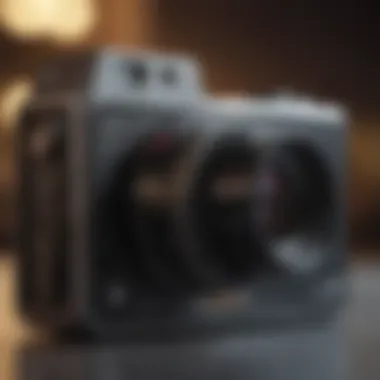

This camera takes away the stress of awkward photo angles, making it a joy for anyone who enjoys taking themselves on coffee run trips or during travels. A small drawback exists; with just 7 MP, it doesn’t hold a candle to some of the higher-resolution competitors like flagship models, which flaunt 12 MP or more. Still, for most users, this resolution strikes a fair balance.
Backward Compatibility with FaceTime
The inclusion of backward compatibility with FaceTime is not just a nifty feature; it’s an important one. It essentially grants users the ability to connect with others on various iOS platforms, ensuring that the communication remains seamless. This compatibility makes the front camera more than just a tool for selfies; it becomes a bridge to friends and family, no matter which iPhone or iPad they might be using.
The downside? Some users have lamented about the quality of video calls in low light. Nonetheless, for a casual chat during the day or in well-lit environments, the FaceTime capability backed by this camera shines through, reflecting Apple’s commitment to creating a highly interconnected user experience.
In summary, the camera specifications of the iPhone SE reveal a thoughtful balance of performance and practicality. Each element—from lens aperture to field of view—has been crafted to cater to a wide audience, ensuring that even the most casual users can take stunning photos and participate in seamless video interactions.
Image Processing Capabilities
Image processing capabilities stand at the forefront of modern smartphone photography, and for the iPhone SE, this technology plays a critical role in shaping user experience and output quality. With the blend of advanced hardware and intelligent software algorithms, the ability to process images effectively enables users to capture stunning photographs under various conditions. The specific elements, like Smart HDR and computational photography methods, greatly enhance the overall photographic capabilities while also addressing common pitfalls in casual photography, such as low-light performance or color accuracy.
Smart HDR Technology
Smart HDR technology is a game-changer in how we capture high-dynamic-range images on the iPhone SE. This feature merges several frames with different exposures into a single photo, allowing for finer details in both highlights and shadows. The beauty of this technology lies in its ability to balance contrasting elements, resulting in vivid, crisp images even in challenging lighting scenarios.
- Key Characteristic: The automatic adjustment of exposure settings so that each element in an image is captured accurately.
- Benefits: Users benefit significantly as they don't need to worry about manually adjusting their settings for perfect shots. Just point and shoot, the Smart HDR does the hard work.
Despite its merits, there are nuances to consider—sometimes, if the scene is too dynamic, it may lead to a bit a halo effect around subjects, slightly affecting natural perception.
Computational Photography Innovations
The innovations in computational photography represent a leap forward in how smartphones approach image capture and processing. The iPhone SE incorporates technologies that allow it to make use of AI and machine learning to refine images in real-time.
Portrait Mode
Portrait Mode offers a stunning ability to create depth-of-field effects, blurring backgrounds while keeping the subject sharply in focus. This creates a professional feel, akin to what you'd achieve with high-end cameras.
- Unique Feature: The software analyzes the scene to determine what should be the focus, applying its algorithm to create either natural or dramatic blurs based on user preference.
- Advantages: This feature is particularly favored for taking selfies or portraits, as it adds an artistic flair without needing specialized photography skills.
- Considerations: However, it can struggle in low-light scenarios, where the results may not consistently meet expectations.
Night Mode
Night Mode is also an essential element of computational photography in iPhone SE, allowing users to capture brighter and clearer images in low-light settings.
- Key Characteristic: It uses longer exposure times and advanced noise reduction algorithms to brighten dimly lit scenes while maintaining detail.
- Benefits: This is especially beneficial for users who frequently take pictures at dusk or in poorly lit environments—capturing sunchsets or atmospheric shots become more manageable.
- Unique Features: One standout is automatic image stabilization to combat shake, particularly useful when lighting is less than ideal.
While Night Mode largely excels, it occasionally exhibits overexposure when facing very high-contrast situations, which could lead to blown-out highlights.
In sum, the iPhone SE’s image processing capabilities, from Smart HDR to innovative computational techniques, elevate everyday photography into a realm that includes artistry and proficiency. This combination contributes to a user-friendly experience without skimping on the quality.
Each of these features underlines the importance of image processing in the iPhone SE, making it not just a smartphone, but a versatile photographic tool.
Video Recording Features
In the landscape of modern smartphones, video recording capabilities have become a centerpiece for many users. The iPhone SE proudly showcases features that not only meet but surpass expectations for both casual and more serious videographers. When exploring the iPhone SE’s video features, understanding how they contribute to performance is crucial for anyone considering the device for their recording needs.
Video recording on the iPhone SE is bolstered by technical specifications that allow for high-quality content creation. It is not merely about capturing what’s present, but about how those elements come together to create something visually compelling.
4K Video Capabilities
Apple's introduction of 4K video in the iPhone SE marks a significant leap in mobile video technology. With a resolution of 3840 x 2160 pixels, 4K enables users to capture stunning detail that brings visuals to life.
The benefits of shooting in 4K are profound:
- Clarity: Every frame holds a sharpness that is ideal for large screens.
- Editing Flexibility: When it comes to post-production, having a higher resolution provides more latitude for cropping or zooming without sacrificing quality.
The iPhone SE’s ability to shoot at 60 frames per second in 4K allows for smooth motion rendition. This combination of resolution and frame rate not only boosts overall quality but also provides a more cinematic feel.
"Capturing in 4K elevates mobile videography to a new level, ensuring that every detail is not just seen but felt."
When shooting in lower light situations, the Smart HDR feature compensates well, ensuring you still achieve vibrant colors and minimized noise. While the image stabilization helps to smooth out any jerky movements, making the videos more watchable.
Slow-Motion and Time-Lapse Variants
The ability to record in slow motion and time-lapse offers creatives additional tools to play with timing and pacing in their videos. This flexibility can significantly enhance storytelling.
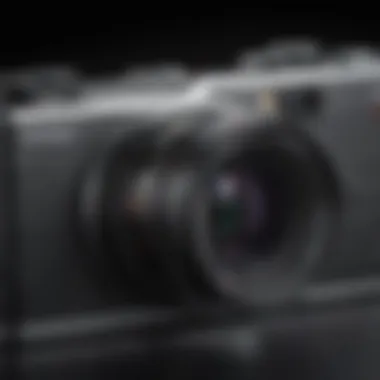
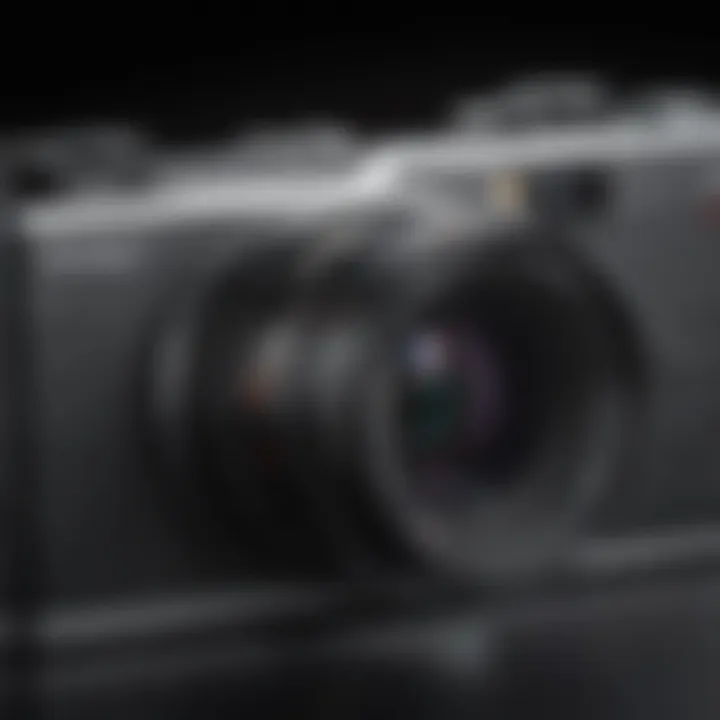
- Slow-Motion: The iPhone SE can capture high-definition video at 240 frames per second, allowing for a dramatic effect that slows down action. Imagine catching a water balloon bursting or a dancer in mid-air, each moment stretched for impact. This capability transforms ordinary scenes into extraordinary tales.
- Time-Lapse: Conversely, time-lapse recording speeds up the passage of time. It is, however, much more than simply capturing images at intervals; it conveys the experience of a sequence that unfolds over hours, all neatly compressed into a matter of seconds. The iPhone SE’s ability to sense motion and adjust accordingly ensures that the final output is fluid and visually engaging.
Comparison with Other Models
Understanding how the iPhone SE holds its ground against other smartphone models is crucial for potential buyers and tech aficionados alike. This comparison not just informs consumers about what they can expect from the iPhone SE's camera capabilities, but it also sheds light on the evolution of smartphone photography. By evaluating its features in relation to competing devices, we can appreciate the unique advantages offered by the iPhone SE in today’s crowded mobile market.
When comparing cameras, several key elements come into play:
- Image quality: This includes factors like resolution, sensor size, and color accuracy.
- Video capabilities: Understanding not just resolution but the features that enhance video functionality.
- User experience: How intuitive the camera modes are for both casual and professional usage.
- Value for money: How the iPhone SE's camera specifications stack against its price point relative to competitors.
By delving into these aspects, consumers gain a clearer picture of whether the iPhone SE aligns with their specific needs and preferences.
iPhone SE vs. iPhone Camera Specs
On paper, the iPhone 11 boasts superior specs, which raises questions about what real-world differences lie between it and the iPhone SE. The iPhone SE features a 12-megapixel rear camera sensor, while the iPhone 11 steps it up with a dual-camera system that includes a 12-megapixel ultrawide lens alongside the main sensor. This bolsters the iPhone 11’s versatility during landscape shots or in tight spaces where capturing more area proves beneficial.
Key Differences:
- Lens Aperture: The iPhone SE maintains a fixed aperture of f/1.8 on its main camera, which aids in excellent low-light performance. The iPhone 11 also features f/1.8, but its additional ultrawide lens has an f/2.4 aperture.
- Night Mode: The absence of Night Mode in the iPhone SE means it struggles to match the iPhone 11’s low-light photography prowess. The iPhone 11 can handle dimly lit environments much better.
- Smart HDR: Both smartphones employ Smart HDR, though the iPhone 11 uses computational photography advancements that enhance dynamic range and detail.
"While the iPhone SE offers solid camera features for everyday use, the iPhone 11 caters to those wanting more creative freedom and higher fidelity in various shooting conditions."
In practical terms, the choice becomes clearer based on user priorities. If a person frequently shoots in a variety of lighting conditions and enjoys experimenting with photography, the iPhone 11 would be a better pick. However, for those who desire reliable performance without the extra gimmicks, the iPhone SE more than suffices.
How iPhone SE Stacks Up Against Competitors
When positioned against other flagship smartphones, the iPhone SE holds its own, particularly against models like the Google Pixel 4a and Samsung Galaxy A51. These competitors also flaunt exceptional cameras for their price range, but the iPhone SE brings some unique strengths to the table.
Side-by-Side Comparison:
- Image Processing: The iPhone SE benefits from Apple’s robust image processing capabilities, ensuring that images are vibrant and well-defined, often surpassing the color accuracy of the Pixel 4a in daylight conditions.
- Video Features: The SE offers 4K video recording at 60 fps, similar to more expensive models. Many competitors may be limited to 30 fps or lower in 4K, which can restrict cinematic quality.
- Software Integration: The seamless integration with iOS enables photography apps to utilize hardware optimally, something that may lag in competitor devices due to different operating system limitations.
Practical Application of Camera Specs
Understanding the practical application of camera specifications in the iPhone SE is crucial for those looking to optimize their photography experience. Each component, from sensor capabilities to processing algorithms, plays a vital role in translating intentions into stunning visuals. Knowing how various features interact allows both amateurs and seasoned photographers to adapt their techniques accordingly. This section dives into two real-world scenarios that showcase how the technical capabilities of the iPhone SE can be leveraged for remarkable photography.
Real-World Photography Scenarios
Low-Light Performance
The iPhone SE manages low-light situations with a surprising level of efficacy. Its f/1.8 aperture is a key player here, allowing more light to hit the sensor, thus enhancing image brightness in darker environments. This characteristic is beneficial because low-light photography often leads to grainy images with lesser-quality cameras, but that's not the case here. By utilizing Smart HDR, the device captures multiple exposures and combines them, which can lead to a more balanced and natural look in dim settings.
Among the unique features in the low-light domain is Night Mode. Although not as advanced as in the higher-end models, it still provides a noticeable improvement over standard shooting, enabling users to take clearer, more vibrant pictures even when conditions aren’t optimal. This blend of hardware and software contributes to a gratifying shooting experience, highlighting why low-light performance is key for users who often find themselves snapping pictures at dusk or in poorly lit environments.
Landscape and Portrait Shots
When we shift gears to landscape and portrait shots, the iPhone SE excels with its dedicated features aimed at enhancing both types of photography. The field of view of the main camera, which is relatively broad, permits expansive landscape shots that capture the grandeur of nature without the need for additional lenses. This trait allows users to frame their shots neatly without chopping crucial elements out. Plus, the color accuracy displayed in these images is impressive, creating vibrant scenes that pop.
On the other side of the equation, portrait shots are equally impressive. Apple's computational photography really shines here with Portrait Mode, which enhances subject focus while softly blurring out the background. This distinctive feature mimics professional cameras, making it popular among social media enthusiasts who appreciate aesthetics. The trade-off, however, is that in certain lighting situations, edges can become a bit soft, which might detract from an otherwise perfect shot. Regardless, the balance between performance and user-friendliness makes it a favored choice for those capturing distinct moments.
User Feedback on Camera Performance
User feedback tends to reflect a sense of satisfaction when it comes to the iPhone SE's camera capabilities. Many users appreciate the ease of use and quality of images produced. Reviews often highlight how intuitive the interface is, allowing users to transition seamlessly between different shooting modes, from basic snaps to more advanced features like portrait settings.
Furthermore, discussions on platforms like Reddit often reveal anecdotal experiences where users have captured stunning images in various scenarios, boosting their confidence in the device’s capabilities. As with any product, there are some critiques, particularly regarding the lack of multiple lenses compared to flagship models. However, for many, the overall value of the iPhone SE’s camera system meets or exceeds expectations.
The camera performance reflects a blend of advanced technology and user-centric features, making it a smart choice for photography enthusiasts of varied skill levels.
End and Insights
When wrapping up a thorough examination of the iPhone SE camera specifications, it's essential to reflect on how these features contribute not just to the technical prowess of the device but also to user satisfaction. The unique combination of hardware capabilities and software enhancements in the iPhone SE’s camera system makes it a noteworthy choice for many users. Whether it's utilizing Smart HDR for improved image clarity or enjoying the benefits of computational photography during a night out, every specification plays a critical role in enhancing the overall experience.
Summary of Key Findings
Throughout the article, several vital points emerged:
- Strong Performance in Various Conditions: The iPhone SE camera shines in multiple environments, be it low-light conditions or bright daylight. The technology involved, like the lens aperture and sensor size, ensures adaptability and quality.
- User Insights: Feedback highlighted that users appreciate the camera's intuitive interface and how effortlessly it captures moments without extensive manual settings.
- Computational Photography: Features such as Night Mode and Portrait Mode indicate Apple's commitment to pushing boundaries with software, allowing for high-quality images without needing a professional-level understanding of photography.
Future Prospects for iPhone Camera Technology
Looking ahead, the trajectory for iPhone camera technology appears boundless. Apple is known for riding the wave of innovation, and the iPhone SE is no exception. Here’s what might be on the horizon:
- AI Integration: Increased incorporation of artificial intelligence could revolutionize how photos are taken and processed, providing users with even more automated enhancements and suggestions.
- Advanced Stabilization Techniques: As videography becomes more critical, future cameras could evolve with better stabilization, making handheld shooting much smoother.
- Lens Versatility: More options in terms of interchangeable lens accessories could cater to enthusiasts wanting more than just the standard offerings.



